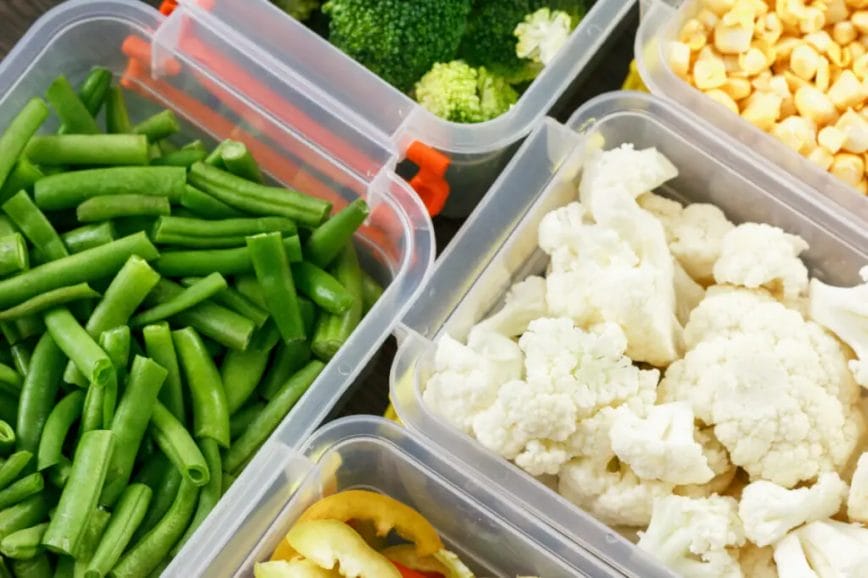Yes, you can definitely ferment zucchini! Fermentation is a great way to preserve this versatile summer squash and enhance its flavor. By allowing the natural bacteria to break down the sugars in zucchini, you can create a tangy and probiotic-rich fermented zucchini that can be used in a variety of dishes.
Whether you’re a fan of pickles or looking to add a unique twist to your meals, fermented zucchini is a delicious and healthy option to explore.

Easy Zucchini Fermentation Recipes
Now, let’s explore some easy fermentation recipes for zucchini:
1. Fermented Zucchini Pickles
Ingredients:
- 3 medium zucchinis
- 2 cloves of garlic, minced
- 1 tablespoon sea salt
- 1 teaspoon mustard seeds
- 1 teaspoon dill seeds
- Filtered water
Instructions:
- Wash the zucchinis thoroughly and cut them into thin slices or spears.
- In a clean jar, layer the zucchini slices with minced garlic, sea salt, mustard seeds, and dill seeds.
- Add enough filtered water to cover the zucchini completely.
- Seal the jar tightly and let it sit at room temperature for 3-5 days.
- Check the taste and texture of the pickles. If they are tangy and slightly crunchy, they are ready to be refrigerated. Otherwise, let them ferment for another day or two.
- Store the fermented zucchini pickles in the refrigerator for up to a month.
2. Fermented Zucchini Relish
Ingredients:
- 2 cups grated zucchini
- 1 onion, finely chopped
- 1 red bell pepper, finely chopped
- 1 green bell pepper, finely chopped
- 1 ½ cups apple cider vinegar
- ¾ cup honey
- 1 teaspoon mustard seeds
- 1 teaspoon turmeric powder
- 1 teaspoon celery seeds
- 1 teaspoon sea salt
Instructions:
- In a large bowl, combine the grated zucchini, chopped onion, and bell peppers.
- In a saucepan, bring the apple cider vinegar, honey, mustard seeds, turmeric powder, celery seeds, and sea salt to a boil.
- Pour the boiling mixture over the zucchini and peppers, and stir well to combine.
- Let the mixture cool down to room temperature.
- Transfer the relish into sterilized jars and seal them tightly.
- Allow the jars to sit at room temperature for 2-3 days to ferment.
- After fermentation, refrigerate the relish for up to 2 weeks.
3. Fermented Zucchini Kimchi
Ingredients:
- 3 medium zucchinis, thinly sliced
- 2 tablespoons Korean red pepper flakes (gochugaru)
- 2 cloves of garlic, minced
- 1 tablespoon grated ginger
- 1 tablespoon fish sauce (optional for non-vegetarian)
- 2 green onions, chopped
- 1 teaspoon sugar
- 1 teaspoon salt
Instructions:
- In a large bowl, combine the zucchini slices, Korean red pepper flakes, minced garlic, grated ginger, fish sauce (optional), chopped green onions, sugar, and salt.
- Massage the mixture with your hands until the zucchini is well coated with the seasonings.
- Transfer the kimchi mixture into a jar, pressing it down firmly to remove any air bubbles.
- Leave about an inch of headspace in the jar.
- Seal the jar tightly and let it ferment at

Probiotic Power: How fermenting zucchini enhances its probiotic properties
In this section, we will explore how fermenting zucchini can increase its probiotic power and provide a delicious and nutritious addition to your diet.
The Science Behind Probiotics
Probiotics are live bacteria and yeasts that are beneficial to our health, particularly our gut health. They help maintain a healthy balance of microorganisms in our digestive system, which is essential for overall well-being.
When zucchini is fermented, it undergoes a transformation where the naturally occurring sugars and carbohydrates are broken down by the microorganisms present. This process produces lactic acid, which acts as a natural preservative and creates an acidic environment that inhibits the growth of harmful bacteria.
The Benefits of Fermented Zucchini
Fermented zucchini not only offers a tangy, flavorful addition to meals but also provides several health benefits:
- Improved Digestive Health: The probiotics produced during fermentation can help restore the balance of healthy gut bacteria, improving digestion and nutrient absorption.
- Enhanced Nutritional Value: Fermentation increases the bioavailability of essential nutrients in zucchini, making them easier for our bodies to absorb.
- Boosted Immune System: The presence of beneficial bacteria in fermented zucchini can strengthen the immune system, promoting overall wellness.
- Reduced Food Waste: Fermenting zucchini is a sustainable way to repurpose excess or aging zucchinis, reducing food waste in your kitchen.
Incorporating Fermented Zucchini into Your Diet
Once your zucchinis have been successfully fermented, there are numerous ways to incorporate them into your daily meals:
- Add fermented zucchini slices to salads or sandwiches for a tangy twist.
- Use them as a topping for pizzas or tacos to add a probiotic punch.
- Blend fermented zucchini into dips or spreads for an extra flavor boost.
- Enjoy them as a side dish alongside grilled meats or roasted vegetables.
- Experiment with adding fermented zucchini to stir-fries or pasta dishes for a unique twist.

Step-by-Step Guide to Fermenting Zucchini: Learn the process of fermenting zucchini at home
Fermenting vegetables is a popular method of preserving food while also adding a unique tangy flavor. Zucchini, with its mild taste and crisp texture, can be a great candidate for fermentation. In this section, we will provide you with a step-by-step guide on how to ferment zucchini at home.
1. Gather the necessary ingredients and equipment
Before you begin the fermentation process, make sure you have all the essential ingredients and equipment ready. Here’s what you’ll need:
- Zucchini: Choose firm, fresh zucchini for the best results.
- Sea salt: Opt for high-quality, non-iodized sea salt or kosher salt.
- Spices and herbs (optional): You can add flavor to your fermented zucchini by including spices like garlic, dill, or red pepper flakes.
- Mason jars: Use clean, sterilized mason jars to store the zucchini during fermentation.
- Fermentation weights: These will help keep the zucchini submerged in the brine.
- A fermentation airlock lid (optional): This accessory can help release excess gases during the fermentation process.
2. Prepare the zucchini
Start by washing the zucchini thoroughly under cold water and removing any dirt or debris. You can choose to peel the zucchini or leave the skin intact, depending on your preference. Cut the zucchini into desired shapes, such as slices or spears. Remember to remove the ends of the zucchini before proceeding.
3. Create the brine
Next, it’s time to prepare the brine solution that will facilitate the fermentation process. In a bowl, mix water and sea salt, aiming for a ratio of approximately 1 tablespoon of salt per cup of water. Stir until the salt is fully dissolved.
4. Pack the zucchini into the jars
Take the prepared mason jars and start packing them with the zucchini pieces. You can add your desired spices or herbs between the layers for added flavor. Leave a bit of headspace at the top of the jar to allow for the expansion that occurs during fermentation.
5. Pour in the brine
Slowly pour the brine solution into the jars, ensuring that all the zucchini pieces are fully submerged. It’s crucial to leave at least an inch of headspace at the top to prevent overflow during fermentation.
6. Add fermentation weights
To keep the zucchini submerged in the brine and prevent any exposure to air, place fermentation weights on top of the zucchini. These weights can be specially designed glass weights or simply a clean, food-grade object that fits inside the jar.
7. Cover the jars
If you have a fermentation airlock lid, fix it onto the jars according to the manufacturer’s instructions. Otherwise, you can use regular mason jar lids, but make sure to “burp” the jars daily by briefly opening them to release any built-up gases.
8. Fermentation process
Place the jars in a cool, dark area away from direct sunlight. The ideal temperature for fermenting zucchini is around 65-75°F (18-24°C). Allow the zucchini to ferment for about 3-7 days, depending on your preference for taste and texture. Remember to check the jars daily to ensure the zucchini remains submerged and there is no mold or signs of spoilage.
9. Taste and store
After the desired fermentation period, it’s time to taste your fermented zucchini. Use a clean utensil to scoop out a piece and sample its flavor. If you’re satisfied with the taste, remove the weights and transfer the jars to the refrigerator for long-term storage. The chilled environment will slow down the fermentation process.
Now that you have a comprehensive step-by-step guide to fermenting zucchini, you can enjoy the tangy goodness of homemade fermented vegetables whenever you desire. Experiment with different flavors and share your fermented zucchini creations with friends and family.
Creative Ways to Use Fermented Zucchini
Fermenting zucchini is an excellent way to preserve this delightful summer vegetable and add a tangy twist to your dishes. If you’re looking to explore unique recipes and uses for fermented zucchini, you’re in the right place! Here are some creative ways to incorporate this flavorful ingredient into your meals:
1. Fermented Zucchini Pickles
One of the simplest and most popular ways to enjoy fermented zucchini is by making pickles. Slice the fermented zucchini into thin rounds or spears and pack them into sterilized jars along with your preferred pickling spices, such as dill, garlic, and mustard seeds. Fill the jars with a brine solution made of water, vinegar, and salt. Let the pickles ferment for a few days to develop their tangy flavor. These pickles can be a fantastic addition to sandwiches, salads, or enjoyed as a tangy snack on their own.
2. Fermented Zucchini Salsa
Take your salsa game to the next level by adding fermented zucchini to the mix. Dice the fermented zucchini and combine it with tomatoes, onions, jalapeños, cilantro, lime juice, and your favorite seasonings. Let the flavors meld together for a couple of hours, and you’ll have a zesty and tangy salsa that pairs perfectly with tortilla chips, grilled meats, or even as a topping for tacos and nachos.
3. Fermented Zucchini Relish
If you’re a fan of relish, you’ll love this fermented zucchini twist. Grate or finely chop the fermented zucchini and combine it with diced onions, vinegar, sugar, and spices like turmeric and mustard seeds. Let the relish sit in the fridge for a few days to allow the flavors to develop. Use this tangy relish on burgers, hot dogs, sandwiches, or even as a topping for grilled fish.
4. Fermented Zucchini Kimchi
Give your traditional kimchi a unique twist by adding fermented zucchini. Shred the zucchini and mix it with your favorite kimchi ingredients, such as cabbage, radishes, garlic, ginger, and Korean chili flakes. Pack the mixture tightly into jars and let it ferment for a few days. The fermented zucchini adds a subtle tang and crisp texture to the spicy and flavorful kimchi. Enjoy it as a side dish or as a topping for rice bowls and stir-fries.
5. Fermented Zucchini Pasta Sauce
Elevate your pasta dishes with a fermented zucchini pasta sauce. Blend the fermented zucchini with cooked tomatoes, garlic, onions, herbs, and a splash of olive oil until smooth. Heat the sauce on the stove, and you’ll have a rich and tangy sauce that pairs perfectly with pasta, whether it’s spaghetti, penne, or fusilli.
Can you ferment zucchini?
Yes, zucchini can be fermented. It can be sliced or shredded and then submerged in a brine solution with added spices or herbs. The fermentation process will give zucchini a tangy and slightly sour flavor, similar to pickles.
Conclusion
Fermenting zucchini is an exciting and delicious way to preserve this versatile vegetable. The process of fermentation not only extends the shelf life of zucchini but also enhances its flavors and nutritional value.
By adding ingredients like salt, herbs, and spices, you can create unique and tangy zucchini pickles or relishes. Fermented zucchini can be enjoyed as a side dish, added to sandwiches or salads, or used as a condiment.
With its probiotic benefits and distinct taste, fermented zucchini offers a delightful twist to your culinary repertoire. So, why not give it a try and explore the world of fermented zucchini?

